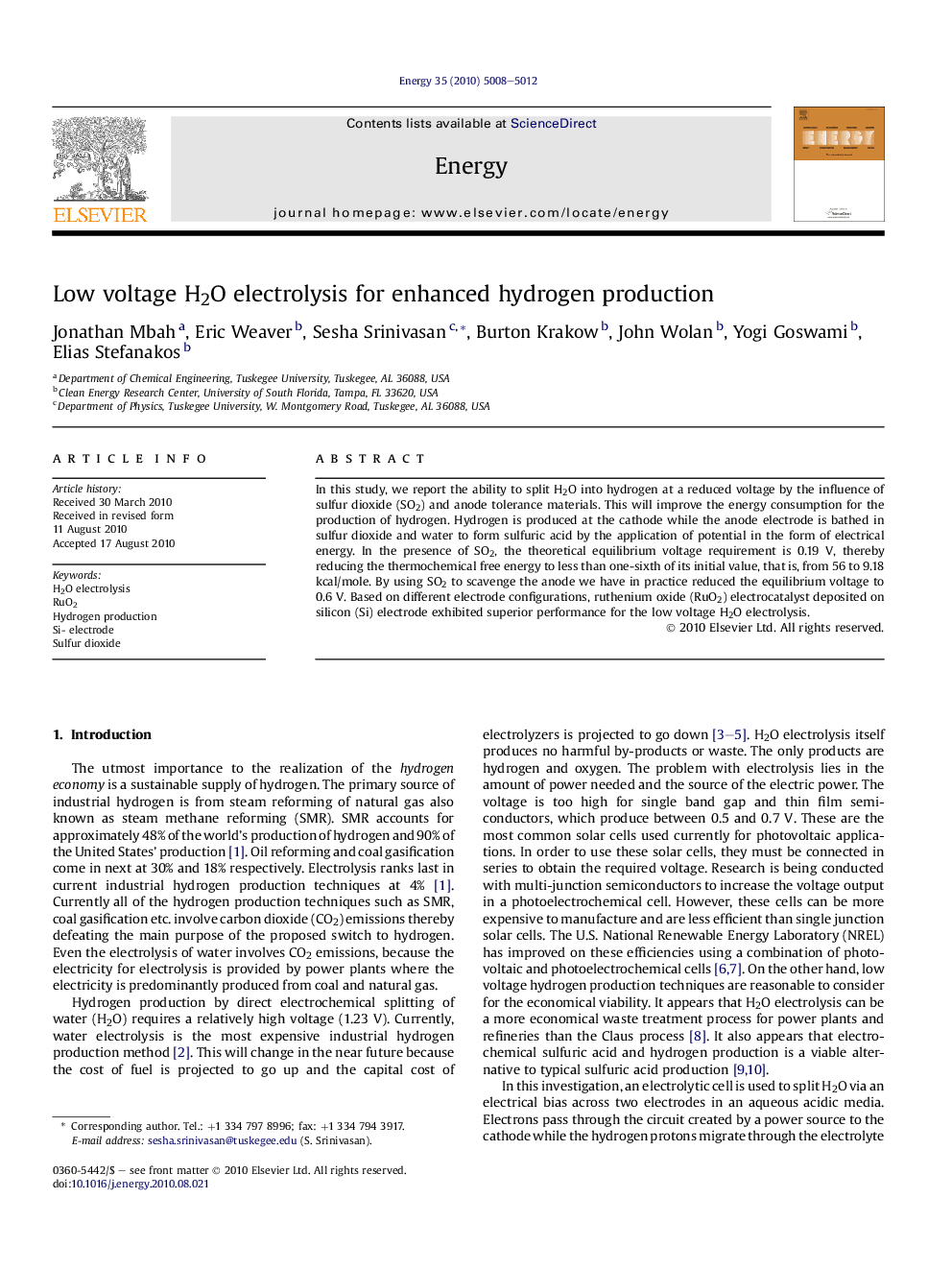| Article ID | Journal | Published Year | Pages | File Type |
|---|---|---|---|---|
| 10682795 | Energy | 2010 | 5 Pages |
Abstract
In this study, we report the ability to split H2O into hydrogen at a reduced voltage by the influence of sulfur dioxide (SO2) and anode tolerance materials. This will improve the energy consumption for the production of hydrogen. Hydrogen is produced at the cathode while the anode electrode is bathed in sulfur dioxide and water to form sulfuric acid by the application of potential in the form of electrical energy. In the presence of SO2, the theoretical equilibrium voltage requirement is 0.19Â V, thereby reducing the thermochemical free energy to less than one-sixth of its initial value, that is, from 56 to 9.18 kcal/mole. By using SO2 to scavenge the anode we have in practice reduced the equilibrium voltage to 0.6Â V. Based on different electrode configurations, ruthenium oxide (RuO2) electrocatalyst deposited on silicon (Si) electrode exhibited superior performance for the low voltage H2O electrolysis.
Related Topics
Physical Sciences and Engineering
Energy
Energy (General)
Authors
Jonathan Mbah, Eric Weaver, Sesha Srinivasan, Burton Krakow, John Wolan, Yogi Goswami, Elias Stefanakos,
